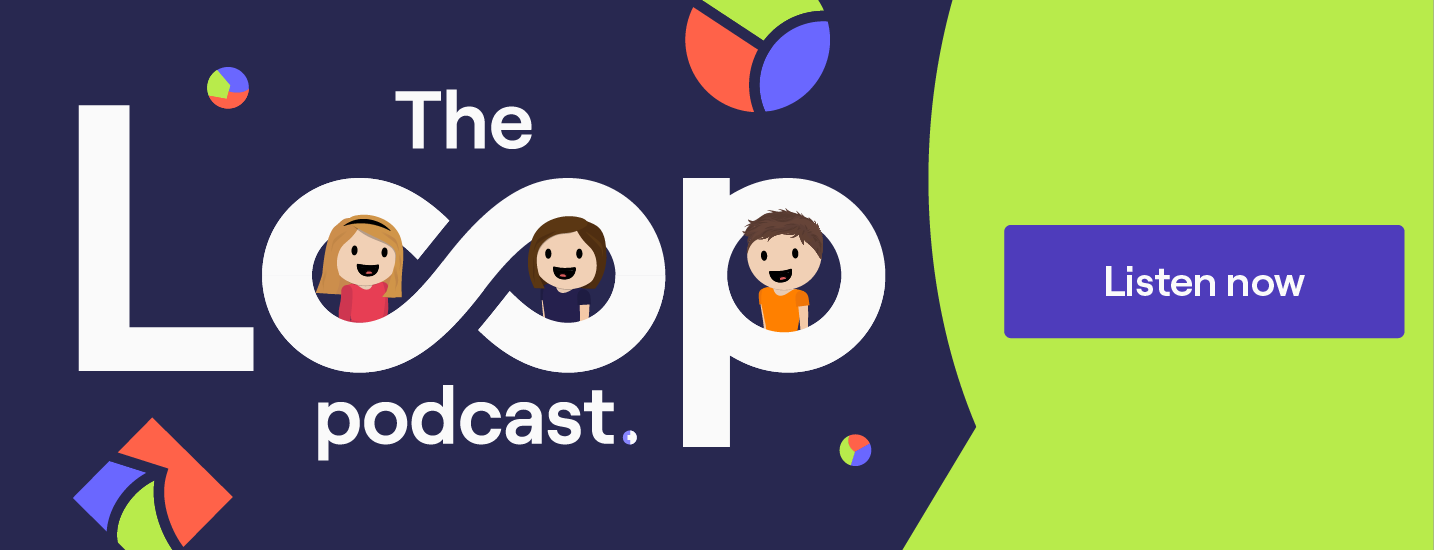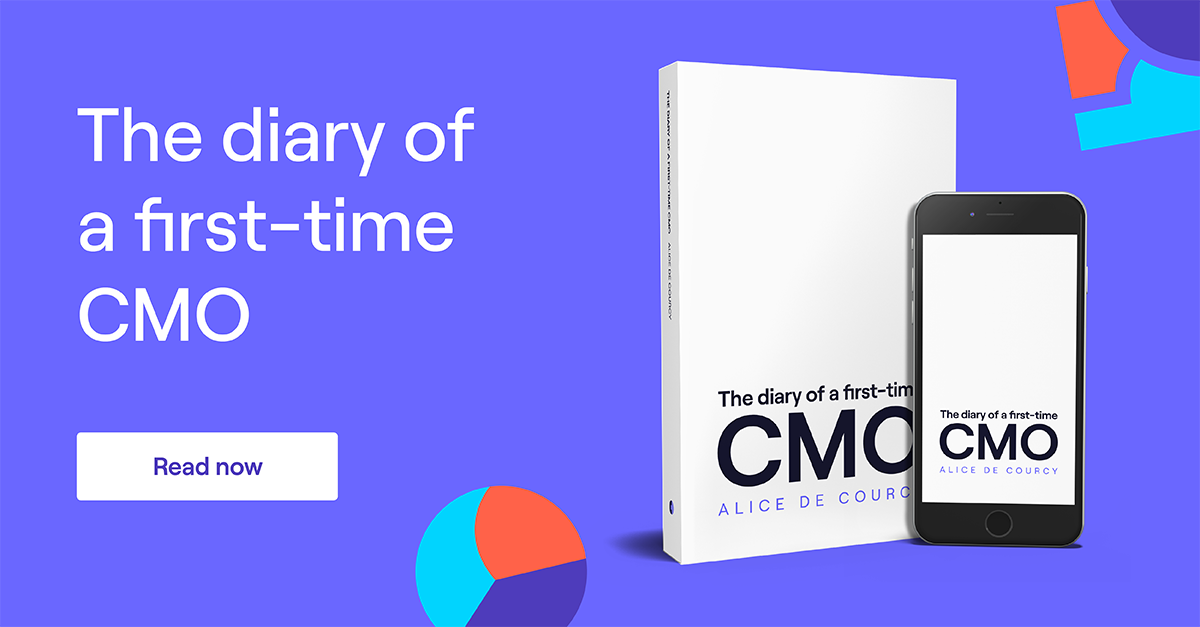How Can Marketing Help Sales? (Without Taking Orders)
B2B buying behaviour has changed. We’re sure you’ve noticed it - the clues are everywhere.
In the past, there was:
- Less competition.
- Less access to information for comparison.
- Buyers had less control over the buying process.
- If they wanted to find out what a company had to offer, they’d usually need to speak to a sales rep.
- And it was the role of a marketer to find as many people - or leads - for sales to speak to.
But things are changing.
In today’s market:
- Buyers are 70% of the way through their research before they speak to sales.
- Buyers don’t need (or want!) to speak to sales until they’re ready to buy. They want to self-serve.
- And ultimately, the buyers hold all the power.
Marketers still have a responsibility to guide buyers to the right information.
To make sure that prospects think of their brand first when they go in-market to speak to sales and are ready to buy.
And to choose your company over all the other competition crowding the space.
Here’s how marketing can help sales 👇
Marketers can’t rely on outdated tactics
In the last decade, technology has evolved dramatically. And buyer expectations have shifted, too. So why are so many B2B marketers stuck in 2010 when it comes to their marketing tactics?
How did we end up here?
If we go back 10-15 years, the traditional approach to marketing and sales was booming.
- It took a lot of work for buyers to research complex B2B products and services for themselves.
- The digital world wasn’t as mature as it is now.
- B2B marketers only had limited direct access to customers.
So, marketing’s job was to compile lists of prospects that sales could reach out to over the phone because there wasn’t another way to do it.
But over the decade, there has been an explosion of channels through which businesses can reach buyers, which is how marketing supports sales.
Today’s B2B marketers are living through an age of unprecedented interconnectivity. They can now target a larger audience than ever before.
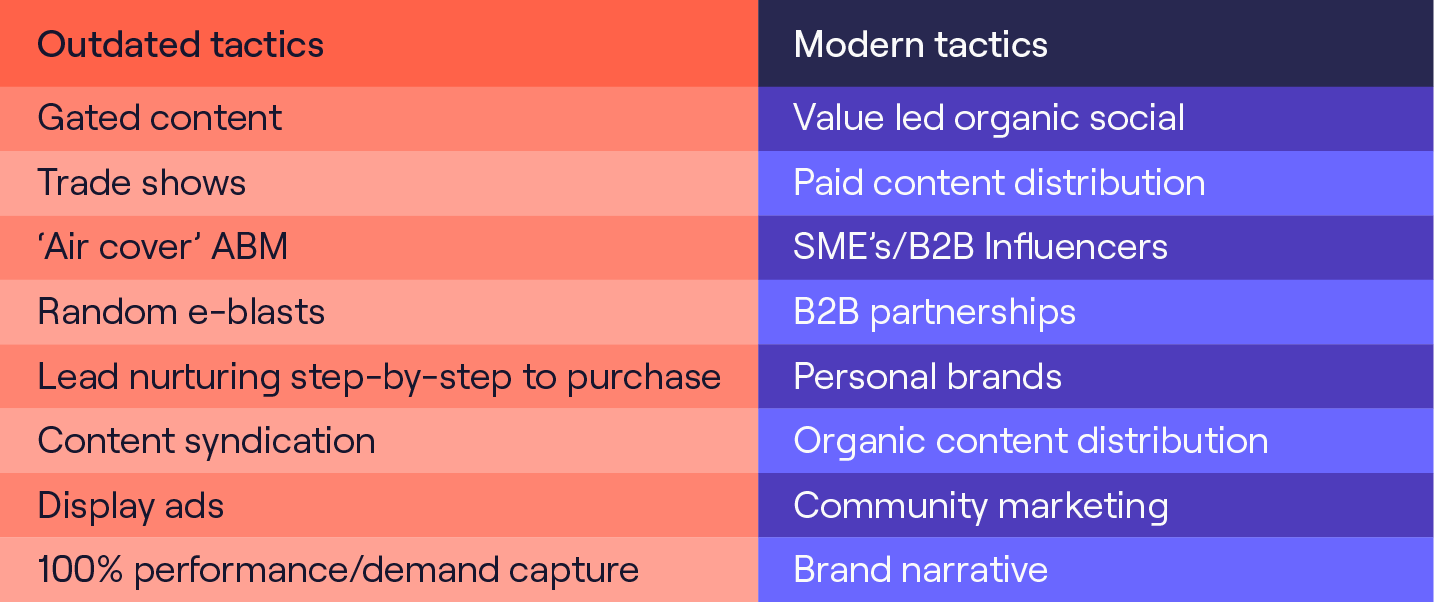
How marketing became the lead volume department
In short, marketing became the lead volume department. And there are a few reasons why:
- Prospect data was limited in 2012. Marketing was required to build B2B databases, generate ‘warm’ leads, and then pass them to sales so they had leads to go outbound, too.
- PPC ad costs were lower due to low competition, and lead generation through performance marketing was a viable option. A high volume of leads for a low cost is not a bad plan.
- We were too bought into the rise of attribution software. In a bid to be data-driven, we tried to connect all our marketing decisions to what came up in Google Analytics and Salesforce. This led to huge budgets being allocated to what drove the ‘last touch’ of a buying journey, ignoring every other ‘untrackable’ touch that led them there.
All this added up to more and more B2B marketers jumping on the lead gen, performance marketing bandwagon.
More competition equals a stark increase in ad costs, meaning fewer leads for your marketing budget. The viability of generating thousands of cheap leads and then repeating the process over and over becomes very tricky to rely on.
Either you massively increase your budget to get the same results as before (as your KPIs continue to increase… ).
Or you need to find a new way for marketing to help sales.
Marketers need to evolve
Now we realise - every company is different.
There are some industries where companies are successful in using lead-gen tactics. Some are tied into more rigid processes. Others have varying expectations from leadership.
Many different team setups and circumstances can make grand transitions and changes more difficult. For some B2B organisations, lead generation work is always going to be involved.
But that doesn’t change the fact that B2B buying behaviour has changed.
And marketers need to be doing things differently to support sales.
- Spending time finding the right places to create demand versus just capturing demand.
- Embrace more than just the classic sales support, lead generation, and MQL hamster wheel approach.
- Generating new strategies, tactics and activities to reach buyers and influence them before they make up their minds on their own.
- Focusing on brand as a differentiator.
- Stop measuring success based on the number of leads or MQLs generated. Instead, look at the impact on revenue.
Initially, our CMO requested a £5,000 per month ‘testing budget’. Then, she created a proposal detailing how the team would use this budget for four months. Running ungated, demand-gen plays using our top-performing content.
This involved optimising for consumption and not for conversions.
The hypothesis was that we would start to see an increase in inbound demo leads as a result of this additional spending on demand gen.
Turns out, this hypothesis was correct.
Over three months, we saw a 47% increase in these high-intent demo requests on our website.
As you can imagine, this gave us and the leadership team confidence that this was the right way to move forward.
Learn more about setting marketing revenue goals from Cognism CMO Alice de Courcy.
How updating marketing tactics helps sales
You might find that salespeople are tentative about marketing’s tactics changing —after all, they’ve been relying on a steady stream of leads from marketing for the past decade.
However, updating marketing tactics can only benefit sales in the long run.
So how can marketing help score sales leads?
First of all, there are infinite options when it comes to giving sales the data they need for outreach without marketing prioritising lead gen activity.
With marketing’s sights set on updating tactics to better target the modern customer, sales will likely only receive better-quality leads.
High-quality leads = a happy sales team.
Marketers need the skills to reach out-of-market buyers
The vast majority of your potential buyers are not in-market to buy right now. We’re talking 95% of them. They might not be in-market to buy for months, maybe even years.
Many marketers have been working under the pretence that marketing to people who aren’t looking to buy is a waste of resources.
But if your marketing only targets the 5% of buyers who are ready to buy, how much money are you leaving on the table?
Why focus on out-of-market vs in-market?
We have to get out of the mindset that we are marketing to stimulate an immediate purchase. Because that’s not how the B2B buying process works.
Especially during economically challenging times when buying committees seem to be getting bigger by the day.
Instead, you need to market so that you’re front of mind when prospects are ready to buy.
For example, you might not be in the market to buy a hoover right now. But when you are, which brand is the first that comes to mind? Because that’s likely the one you’re going to end up choosing.
By neglecting this out-of-market buyer, you’re allowing your competition to get there first, and that's not how marketing supports sales.
Establishing a prior relationship and brand affinity is key so that they will recall your product when they’re ready to purchase.
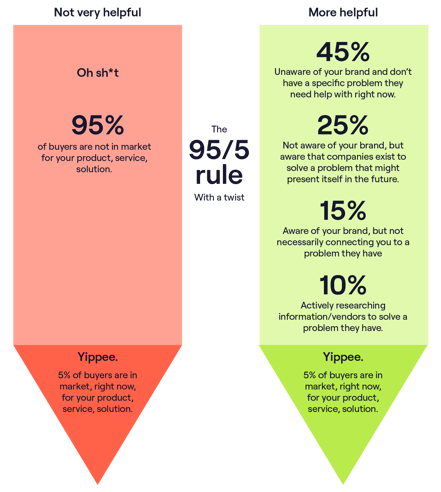
Waiting until they’re in-market is too late. They’ve likely already made up their mind - and they’re going inbound to someone else.
So, how do you define an ‘out-of-market buyer’?
We’ve already mentioned that 95% of your target market is ‘out-of-market’, but let’s break this down a little further.
Within this 95%, there are different stages of awareness.
- Unaware.
- Problem aware.
- Solution aware.
- Actively researching/product aware.
The last 5% that are ‘in-market’ are the ones who are already ready and looking at your product.
Why do out-of-market buyers matter?
Well, in simple terms, it’s an investment in the future. It’s playing a long game. It’s protecting your cash flow in the years to come.
Because a lack of awareness of your company is going to be one of the biggest threats to bringing in future customers.
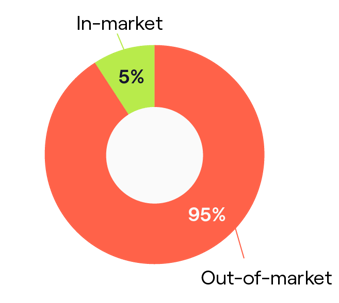
Targeting out-of-market buyers is the only way to ensure you’re reaching future buyers early enough in the process.
It’s about establishing trust and credibility in a market long before your buyer intends to buy.
This is where category entry points (CEPs) come in.
CEPs are the cues that buyers use to access their memories when faced with a buying situation. CEPs influence which brands surface first in the buyer's mind and form the list of initial ‘go to’ options.
For example, to identify catering companies for a client dinner, the entry points might be ‘has good vegan options’ or ‘can offer staff to serve’.
It’s fundamentally what motivates a buyer to seek out a specific company.
When entering a buying situation, a category buyer’s first port of call is to think back on existing memories to identify potential suitable brands to investigate for purchase.
If they don’t remember a brand that fits the bill, they might do some research, such as running a quick Google search or asking their peers.
But even after doing their additional research, buyers will still tend to stick to the brands they’ve heard of.
This tells B2B marketers that they need to dominate relevant category entry points so that when buyers need what you sell, you are the first company on their list.
To identify category entry points, you have to understand your customers. What triggers them to buy? What are their motivations? What’s on their criteria list?
Qualitative customer research or quantitative survey data is going to be the key.
How do you reach out-of-market buyers?
The short answer is brand marketing.
Brand marketing is what helps your buyers to build memory structures and connections to your brand. So when your prospects are ✨ready to buy✨, your company has jumped into the forefront of their mind.
Good brand marketing delivers a universal message that resonates even when the person isn’t actively buying. It needs to be memorable. And usually, for messaging to be memorable, it has to spark emotion.
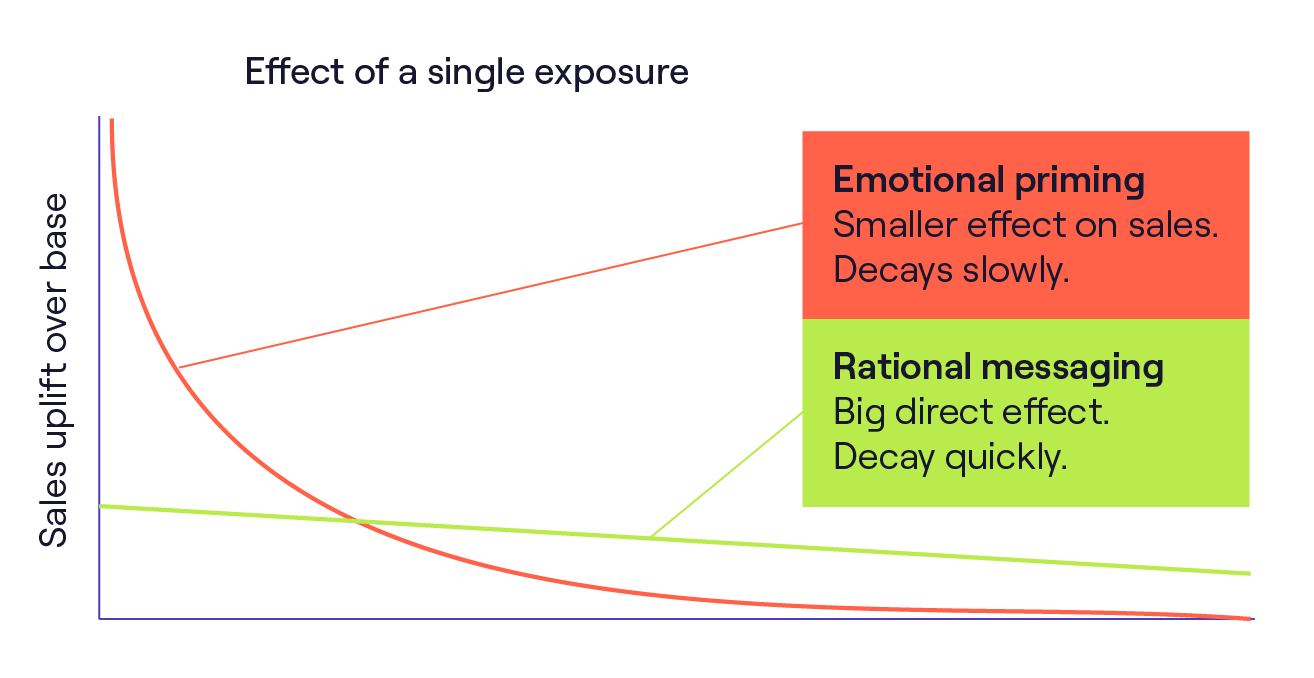
We know what you’re thinking, ‘this only applies to B2C, surely? B2B is a much more rational, considered buying journey.’
Yes, you’re right - there are bigger buying committees and longer decision-making processes and technically, it is a little more rational than B2C. But only slightly.
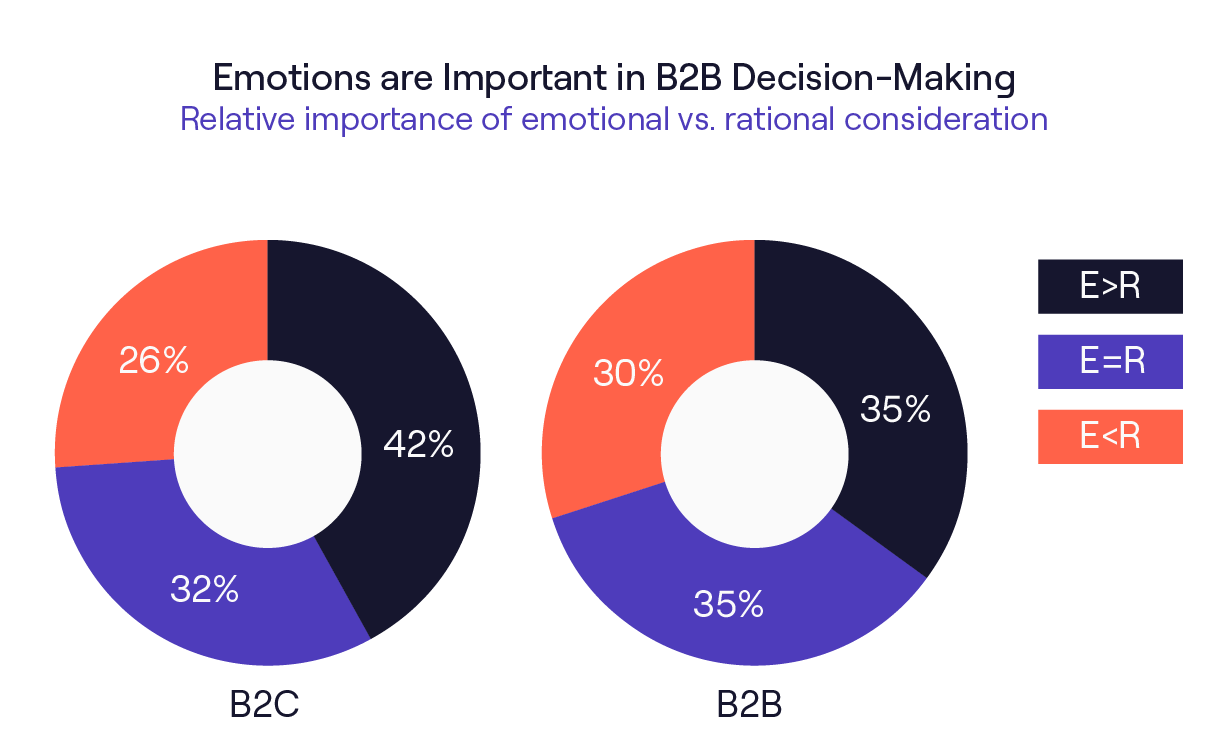
Examples of great B2B brand marketing
Remember Gong’s famous Super Bowl ad?
Convention says you should advertise to B2B decision-makers while they’re thinking about work - but Udi, Gong’s CMO, says:
“Sometimes I want to get to buyers when they are out grocery shopping, or I'll try to catch them when they are least expecting it, like when they are tuning into the big game, so I'll do a Super Bowl commercial.”
“Yes, B2B buyers also watch the Super Bowl; why should that screen time be reserved for B2C?”
“Look at patterns of where your target audience is going and show up there.”
In other words, Udi realised the importance of reaching B2B decision-makers when they were least expecting it and creating a memorable experience.
Or what about Trainual’s remake of the ‘This is How You Do It’ track by Montell Jordan?
CMO of Trainual, Jonathan Ronzio, said:
“Making this was some of the most fun we’ve ever had.”
And that sense of fun translates to the viewer. Sparking emotion and leaving a lasting memory.
Jonathan adds:
“Modern marketing is about the brand - brand resonance and relevance. Your brand is your reputation, and your reputation drives revenue.”
Want to see more examples of brilliant B2B brand marketing? Click here to view the gallery.
Cognism’s Value Loop
While the examples we’ve just shown are great, they’re brand marketing done to the extreme. Not every B2B company is going to produce content like this immediately.
But there are simple ways to start building your brand and sharing your universal narrative.
At Cognism, we have come up with our own strategy to deliver our brand messaging.
To give you some context, in 2022, our focus was to build the foundations of our media machine and create demand content. Going into 2023, our foundations are rock-solid.
The focus now becomes increasing the number of people who are a part of the ‘value loops’ that form the key cornerstones of our media machine.
Examples of this are:
- Our newsletters.
- LinkedIn company and subject matter expert following.
- Repeatable live event audiences.
- Website users.
- Podcast listeners.
These are ways our audience can get immediate access to our content and then have repeatable value delivered over and over again.
Our objective is simple. ‘Get more people from our ICP - both customers and prospects - into our value loops’.
This approach helps us to overcome the otherwise chaotic way that people educate themselves. Ensuring we will always remain front of mind thus supporting sales.
How do you measure demand creation?
We get it:
Not only is it hard to let go of being able to track conversions coming in. It’s hard to explain that to your exec team when they come asking about ROI.
The problem is that most brands will never have access to the tracking software needed to measure the long-term impact of brand marketing. Just because you can’t track every touch and impression doesn’t mean it isn’t resonating and making an impact.
There are several indicators you can keep an eye on that prove your brand building is on the right track, such as:
- Engagement rate on paid social ads.
- Comments and qualitative feedback.
- Increase in brand name search volume.
- Increase in direct traffic or referral traffic.
- Self-reported attribution (forms on your conversion pages asking the user where they first encountered your brand).
Then, this is the magic bit.
One way you’ll know your brand marketing is working is when you see a growth in inbound requests.
We know that B2B buyers buy on impulse very rarely. So, there might be a delay between them viewing your brand marketing and actually coming inbound.
But you’ll know your brand marketing and efforts focused on out-of-market buyers are working because buyers will be coming to you inbound. Before they go inbound to anyone else. Because you are the brand that came to mind first.
How reaching out-of-market buyers helps sales
Marketing targeting out-of-market buyers, especially with brand marketing, helps to raise brand awareness.
Brand awareness helps to make sales conversations much easier. For example:
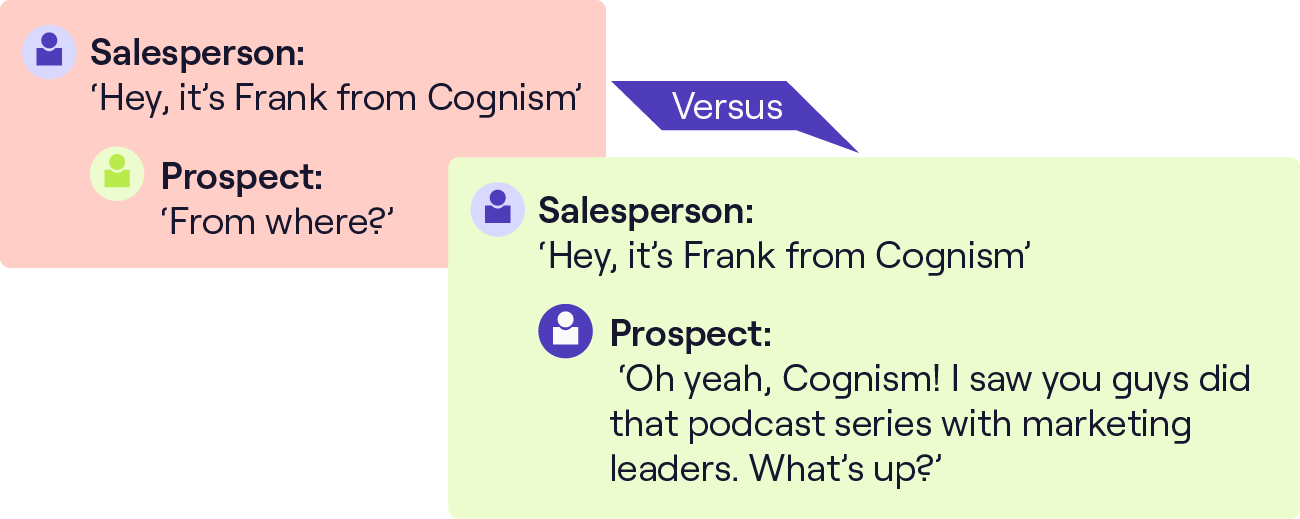
Brand recognition helps salespeople get over the first hurdle and into a productive sales conversation.
Marketers need to find the right places to create demand
So, we know that buying behaviour has changed, and marketers need to focus their time and attention on reaching these buyers earlier in the buying process. And this can be done through brand marketing and establishing an emotional connection.
But how do you find the right places to create that demand?
Create vs capture demand
Create demand, as it sounds, is the process of creating an interest, need or desire - in other words, demand - for your product or service. It’s about driving awareness through a variety of strategies and channels to get in front of your target audience.
Whereas capture demand comes later in the marketing funnel, targeting customers with high buying intent, to ‘catch’ that demand and convert it.
The problem comes when you are only trying to capture demand and not paying enough attention to creating it.
If you aren’t fuelling the funnel with enough demand, there will be much less to capture.
And if you fail to reach buyers early enough in the process, another brand will reach them first.
Create vs capture demand is a delicate balance. You want to focus on capturing demand from in-market buyers, of course. That’s how you guarantee cash flow and hit revenue targets in the here and now.
But you also need to be creating demand for your out-of-market buyers to continue to feed this process at the top.
How do you find the channels you should be using to create demand?
There are a plethora of channels you can use to create demand, such as:
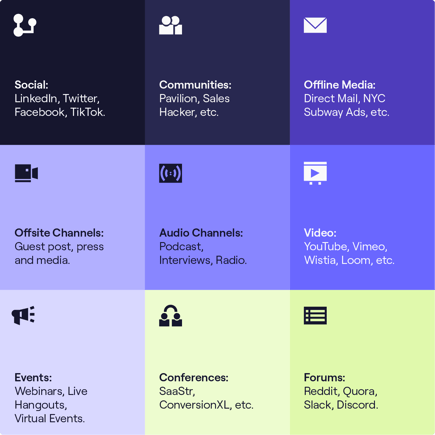
The only way to figure out which channels are best suited to you and your audience is to understand your audience personas.
Whether you do interviews, customer panels or wider surveys - you need to get first-hand customer insights.
Don’t force yourself into a box when choosing channels. B2B marketers need to free themselves of the notion that they must reach decision-makers while they’re at their desks. Or that content shared on the platforms needs to be formal and educational at all times.
How creating demand helps sales
Creating demand helps to feed the funnel from the top, increasing the revenue potential at the bottom.
The more demand sales can capture at the bottom of the funnel, the easier it is for them to hit their revenue targets.
If marketing is focused only on capturing demand and not on creating it, then the function of capturing demand becomes much harder.
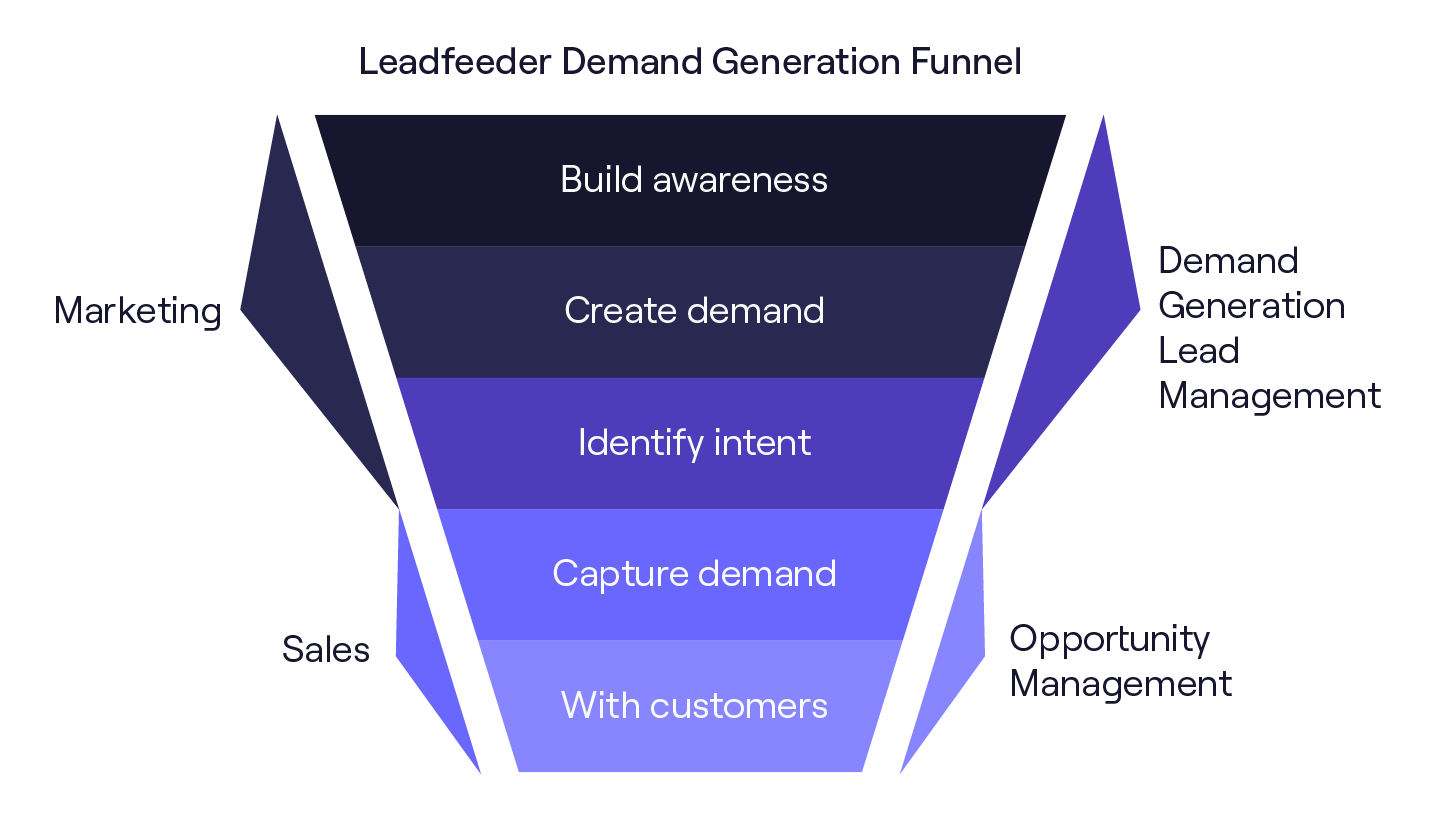
The last word
That was a lot of information, so let’s quickly recap:
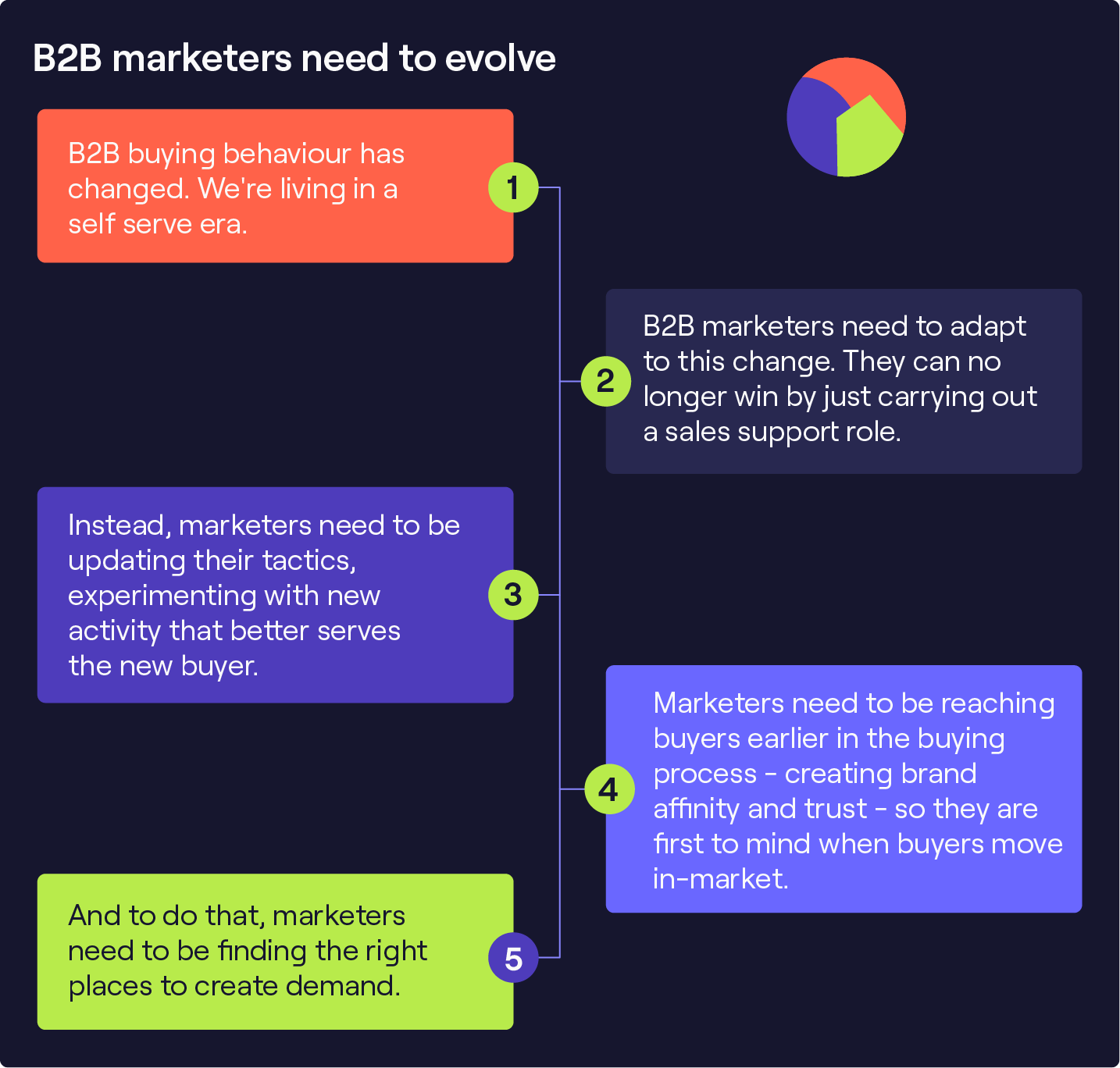
B2B buying behaviour has changed. There’s no denying it.
Businesses need marketers and their skills to survive in this new world.
If marketers’ focus remains on sales support, how are they going to have the time to prioritise out-of-market buyers?
If marketers’ focus remains on lead generation, how are they going to develop the knowledge needed to find the right place to create demand?
Clinging to these outdated mindsets will only make it harder to compete with companies who adapt to this change faster than you.
To discover more insights or to learn more about how marketing helps sales, listen to our podcast 👇
